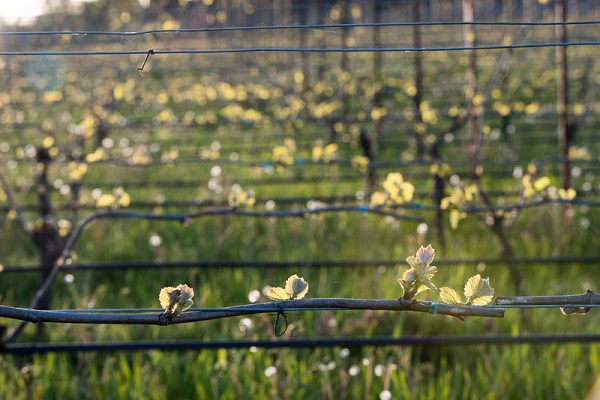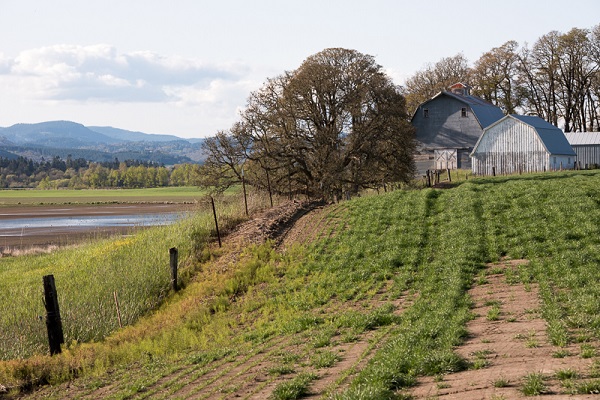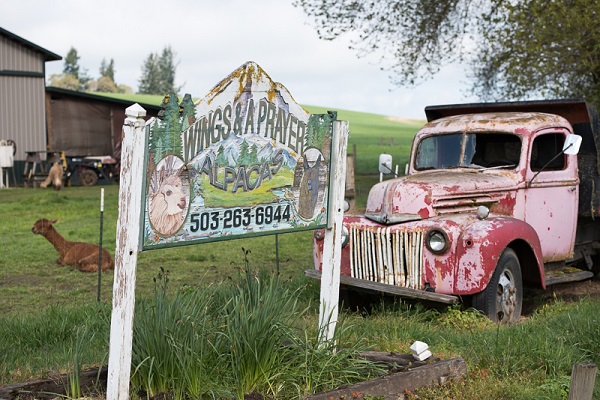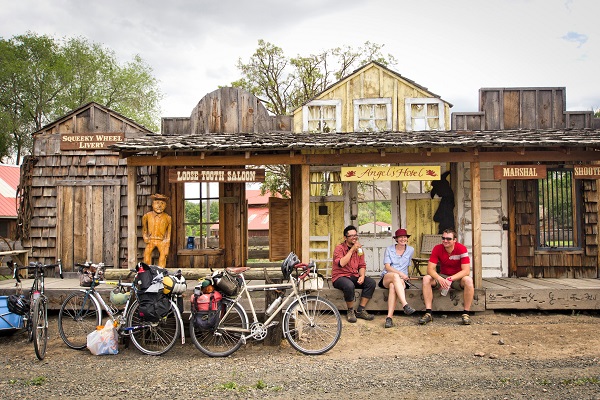written by Peter Murphy | photos by Krista Rossow
What do highways 219, 99, 18 and Polk County’s Bethel Road have in common? They’re part of the long and winding road that serves as the modern Oregon pinot noir trail through the north Willamette Valley.
This trail winds through the terroir of some of the state’s top AVAs. Each AVA, or American Viticultural Area, distinguishes unique geographical characteristics of wine growing areas based on climate, soil and elevation. There are four such AVAs here—Chehalem Mountains, Eola–Amity Hills, Dundee and McMinnville.

Like puffy marshmallows, these rolling hills in the northern Willamette Valley come courtesy of plate tectonics and the Missoula Flood of the last Ice Age. The floods built some of them from silt dredged from as far away as Montana. The sun warms their gentle slopes during the day and as sunlight wanes, a cool breeze wafts over these hills at night, creating a perfect cycle for the delicate pinot noir grape.
This season, it’s all about the golden anniversary of a successful wine varietal in Oregon, which propelled the industry from a handful of innovative locals to a bustling cluster of internationally recognized growers.

Start your journey on the not-yet-official Oregon pinot noir trail north of Newberg, less than an hour’s drive on Highway 99 southwest of Portland. Off the beaten path, you find one of the pioneers of pinot in the hills above. Highway 219 winds slowly up into the Chehalem Mountains, heading north from Newberg. On Mountain Home Road is Ponzi Vineyards. The second generation of Ponzis now follows in the footsteps of Dick and Nancy Ponzi, who founded the winery in 1970. Ponzi pinot noir hit the market nearly a halfcentury ago, and today, under winemaker Luisa Ponzi, it retains the passion that founded the industry. The Ponzi wines have become a worldclass brand and are well worth the drive.
South of Newberg on Highway 99, you’ll find another pinot pioneer in the center of McMinnville. Eyrie Winery arrived a generation ago in what was rural McMinnville, but today borders on downtown. Jason Lett is hard at work checking residual sugar from wine fermenting in barrels at Eyrie’s winemaking facility. Fifty years ago, his father, David Lett, planted pinot vines and produced his first pinot noir. Eyrie celebrated its fiftieth “vertical tasting” this year, while retaining the same small-volume, handson production methods that grew the business.

A stone’s throw from Eyrie, on Davis Street, is Woodard Wines, a wine merchant in central McMinnville. Jeff Woodard is happy to share his knowledge of pinot and other fine wines produced across the region. “Oregon is much more recognized as prime pinot noir country today than it was in the early days,” said Woodard. “Today we’re known for making world-class pinot noir in our perfect growing conditions.”
West of McMinnville, off of Highway 18, a ninety-ton rock lodged on a hill marks the western end of the Missoula Floods moraine. Founders Denis Burger and Elaine McCall boldly staked a claim here, becoming the winegrower farthest from the Portland consumer market at the time. Not quite fifty today, but still a renowned pinot producer, Yamhill Valley Vineyards exploits the rich geology and climate to produce reds from volcanic soil and darker, more “masculine” fruit. “People like to visit to get a feel of what wine country in Europe feels like,” said assistant winemaker Ariel Eberle.
A longtime resident from the area, Linda Hutchison has seen the valley grow up and change over the years. “The wine industry has put this community on the map,” she said. On this day, Hutchison was perusing pies and gourmet food at Blue Raeven Farmstand near the Coehlo Winery in Amity. Jeimy Huber tends the farmstand, having returned home after six years in the Air Force. “It’s like night and day,” she remarked about the area’s growth. “It’s not even the same place. Come for the wine … and the pies, and the jam and honey. It’s all local.”
South on 99 from McMinnville halfway to the southern border of the Eola-Amity Hills AVA, a turn to the east takes you to a place populated with vineyards, wineries and tasting rooms. Bethel Heights Vineyard, Bryn Mawr Vineyards, Stand Sure Vineyard, Temperance Hill Vineyard and Zenith Vineyard. The list goes on and on. This density would, in most settings, lead to conflict, yet “sharing” is the predominant mantra. This notion stems from the wine pioneers who first planted vines in Willamette Valley fifty years ago. “We used to be Oregon’s best kept secret,” said Woodard, “but now the industry here is a world-class success, and everybody is sharing the wealth.”







